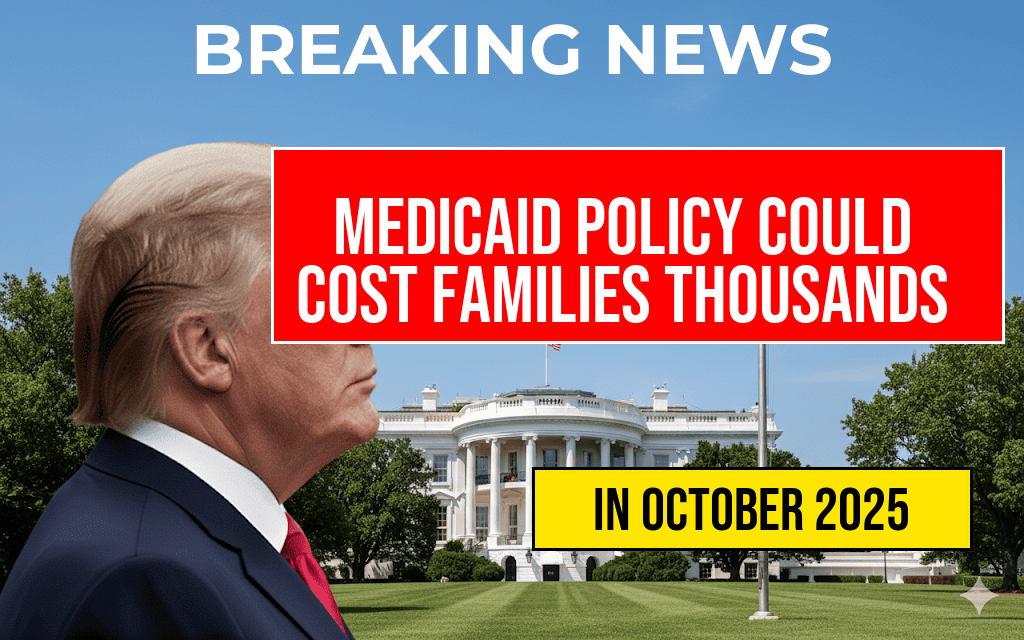Medicaid Policy Shifts Could Increase Out-of-Pocket Costs for Families by Over $5,000 Annually
Recent adjustments to Medicaid policies across several states threaten to significantly raise healthcare expenses for low- and middle-income families. Experts warn that these changes may result in an average increase of more than $5,000 per household each year, as individuals face higher premiums, increased co-payments, and reduced coverage options. While Medicaid has historically served as a safety net for millions, policymakers’ recent modifications—aimed at controlling state budgets and incentivizing employment—may inadvertently create financial strain for vulnerable populations. As states implement these policy shifts, families are scrambling to understand how their healthcare costs will be affected and what steps they can take to mitigate rising expenses.
Understanding the Policy Changes and Their Impact
States have been adopting a range of Medicaid policy modifications over the past year, driven partly by federal directives and state budget considerations. Key among these are stricter eligibility criteria, increased premiums for certain beneficiaries, and tightened work requirements. While intended to promote personal responsibility and financial sustainability, these measures can have unintended consequences, particularly for those with chronic health conditions or limited income who rely heavily on Medicaid services.
According to recent analyses by healthcare policy researchers, these shifts could translate into higher direct costs at the point of care. Families who previously paid minimal or no out-of-pocket expenses may now face increased co-payments for doctor visits, prescription drugs, and emergency care. Additionally, some states have reduced the scope of covered services, compelling enrollees to seek supplemental coverage or pay additional costs themselves.
Projected Financial Burden for Families
| State | Current Average Out-of-Pocket Cost | Projected Increase | Total New Annual Cost |
|---|---|---|---|
| California | $2,000 | $3,200 | $5,200 |
| Florida | $1,800 | $3,500 | $5,300 |
| Texas | $2,200 | $3,100 | $5,300 |
The data suggests that families across different states could see annual out-of-pocket expenses increase by more than $5,000 in some cases. These figures are based on recent policy analyses and highlight the potential financial strain on households already operating on tight budgets. For many, this increase could mean sacrificing other essentials such as housing, education, or nutrition.
Factors Contributing to Higher Expenses
Increased Premiums and Co-Payments
- Several states have introduced or raised monthly premiums for certain Medicaid enrollees, especially those considered able to work or with higher income levels within the Medicaid threshold.
- Co-payments for doctor visits and prescription drugs have been increased, which can add up quickly for families managing chronic illnesses.
Reduced Coverage and Benefits
- Some states are narrowing covered services, excluding certain specialists or therapies that were previously accessible without additional out-of-pocket costs.
- Limits on annual visits or medication refills are being implemented, forcing families to pay more or seek alternative care options.
Stricter Eligibility and Work Requirements
- Work mandates may lead to disenrollment for individuals unable to meet new criteria, pushing them into higher-cost private insurance markets or leaving them uninsured.
- Loss of Medicaid benefits often results in increased reliance on emergency services, which are substantially more expensive than preventive care.
Implications for Vulnerable Populations
Many of the families affected are among the most economically vulnerable, including individuals with disabilities, elderly populations, and working-class households. For these groups, even modest increases in out-of-pocket costs can lead to skipped appointments, delayed treatments, and worsening health outcomes. Healthcare advocacy groups warn that such policy changes threaten to undo years of progress in making healthcare more accessible for low-income Americans.
“When families are forced to choose between paying for medication or other essentials, their health and financial stability suffer,” said Dr. Linda Harris, a health policy expert at the Wikipedia article on health policy. “These increases in out-of-pocket costs could push millions into medical debt or prevent them from seeking necessary care.”
What Can Families Do?
Families concerned about rising costs are encouraged to review their current Medicaid plans and explore alternative assistance programs. Some options include:
- Applying for supplemental coverage through state programs or non-profit organizations.
- Seeking assistance from healthcare navigators who can help identify cost-saving resources.
- Considering health savings options or flexible spending accounts if available through employment.
Ultimately, ongoing policy debates and legislative actions will shape the future landscape of Medicaid. Stakeholders—including policymakers, healthcare providers, and community advocates—continue to call for balanced reforms that control costs without compromising access or quality of care.
For more insights on Medicaid policy developments, visit the official Medicaid website or review analyses from reputable sources such as Forbes.
Frequently Asked Questions
What are the recent Medicaid policy changes affecting families’ out-of-pocket expenses?
Recent Medicaid policy changes have led to increased costs for many families, potentially adding over $5,000 more annually in out-of-pocket expenses due to adjustments in coverage and eligibility requirements.
How might these policy changes impact families with rising medical bills?
Families facing rising medical bills may find themselves paying significantly more out-of-pocket, as new Medicaid policies reduce coverage or increase cost-sharing requirements.
Who is most affected by the recent Medicaid policy updates?
Low-income families, individuals with chronic health conditions, and those nearing eligibility thresholds are most impacted, potentially facing higher medical expenses and reduced coverage options.
Are there any strategies to reduce out-of-pocket medical costs under the new Medicaid policies?
Families can explore options such as applying for additional assistance programs, seeking alternative healthcare providers, or advocating for policy exemptions to help mitigate increased medical expenses.
Where can families find more information about these Medicaid policy changes and assistance options?
Families should visit the official Medicaid website or contact local health departments and patient advocacy groups for detailed information and guidance on navigating the policy updates.










